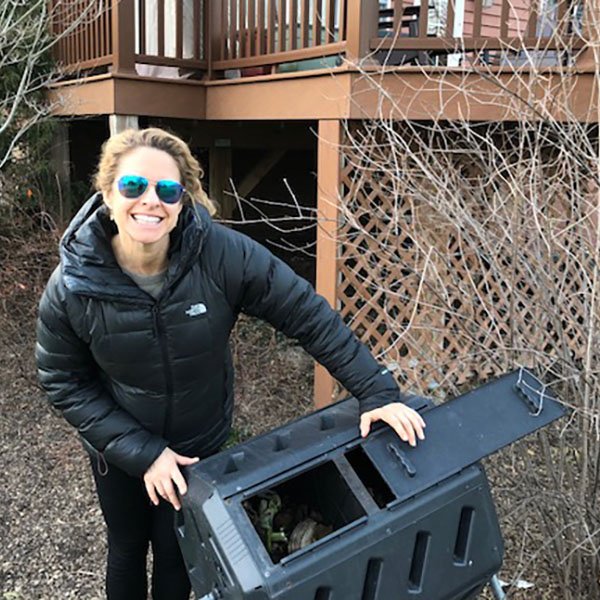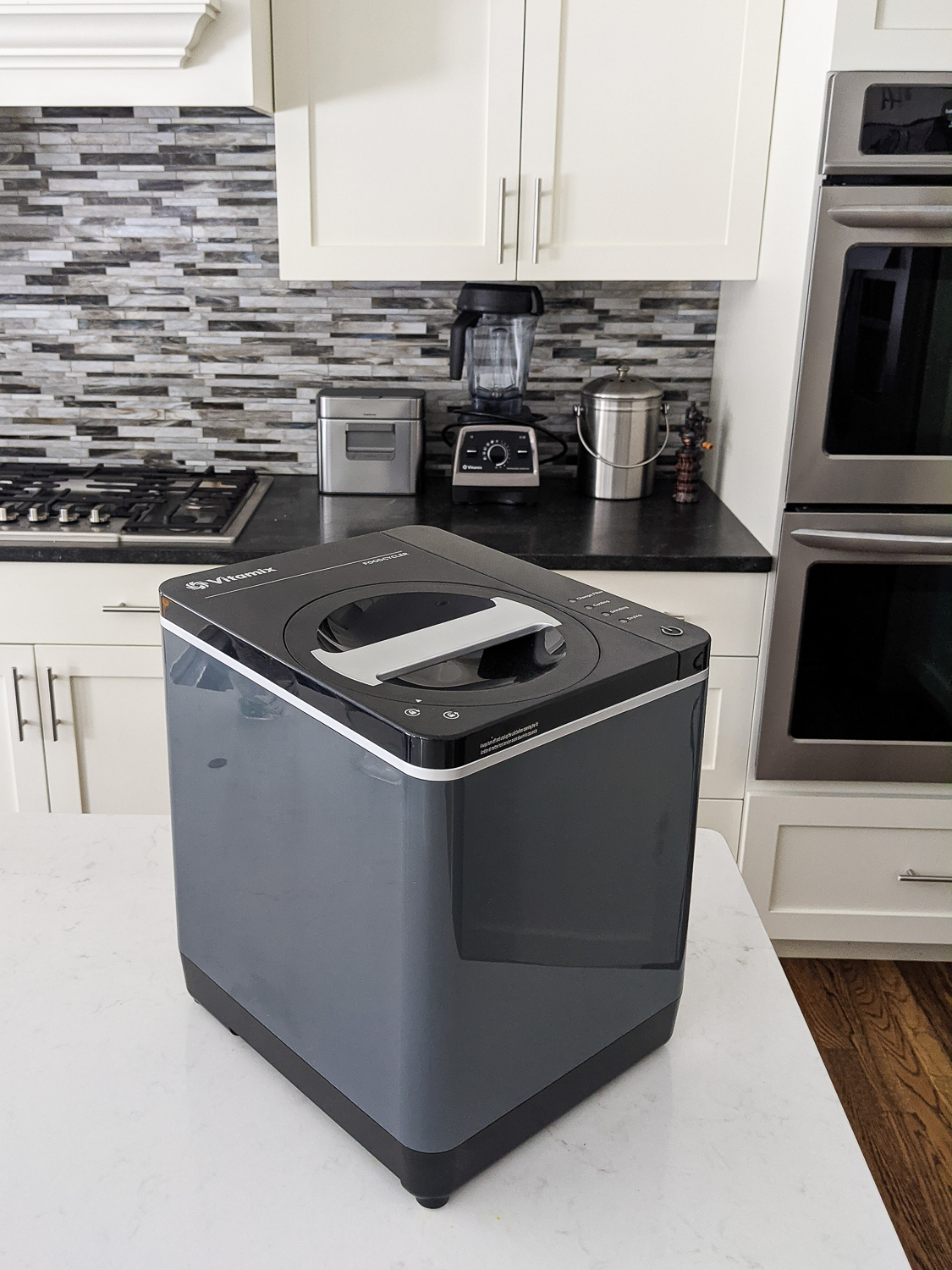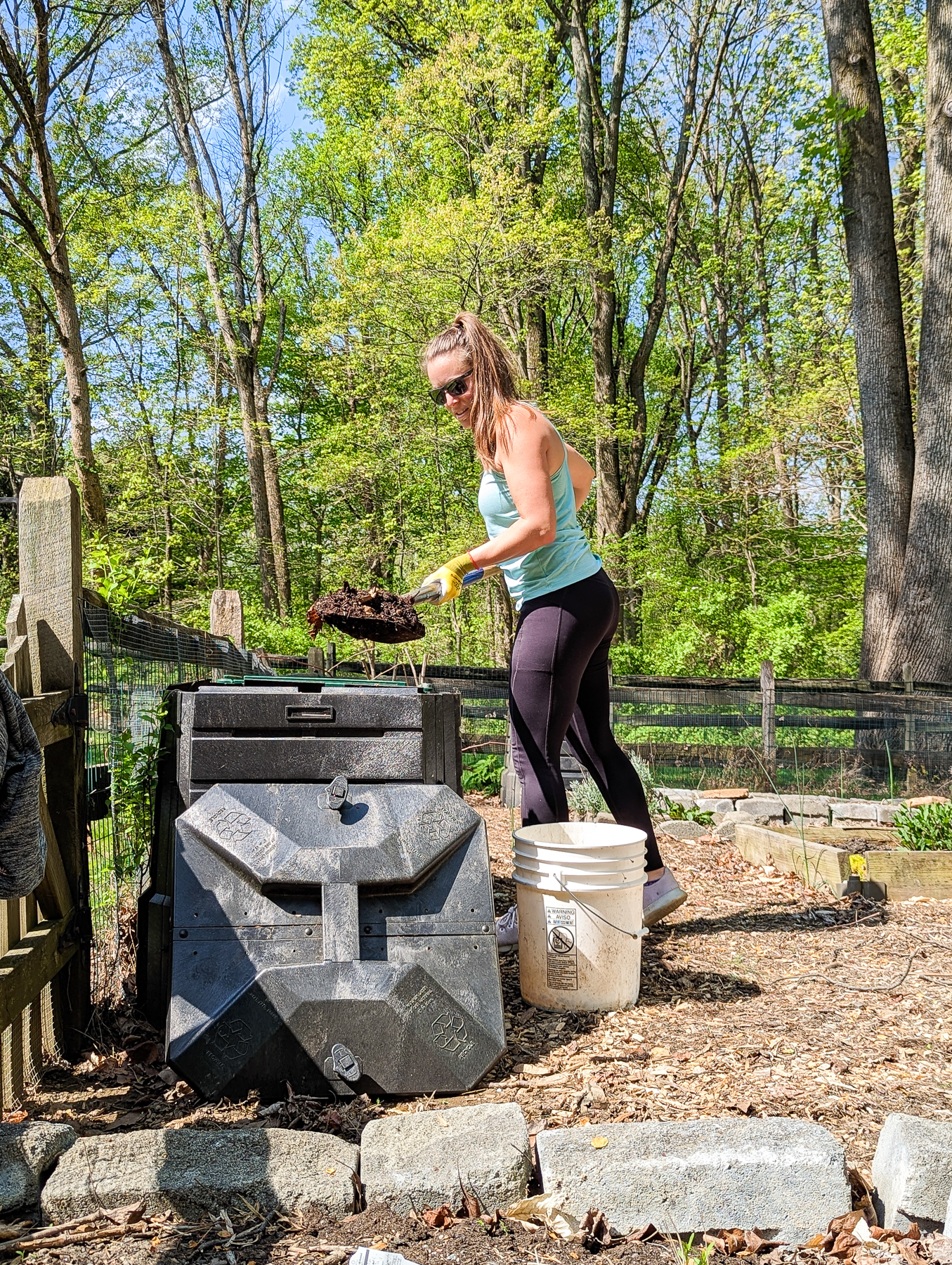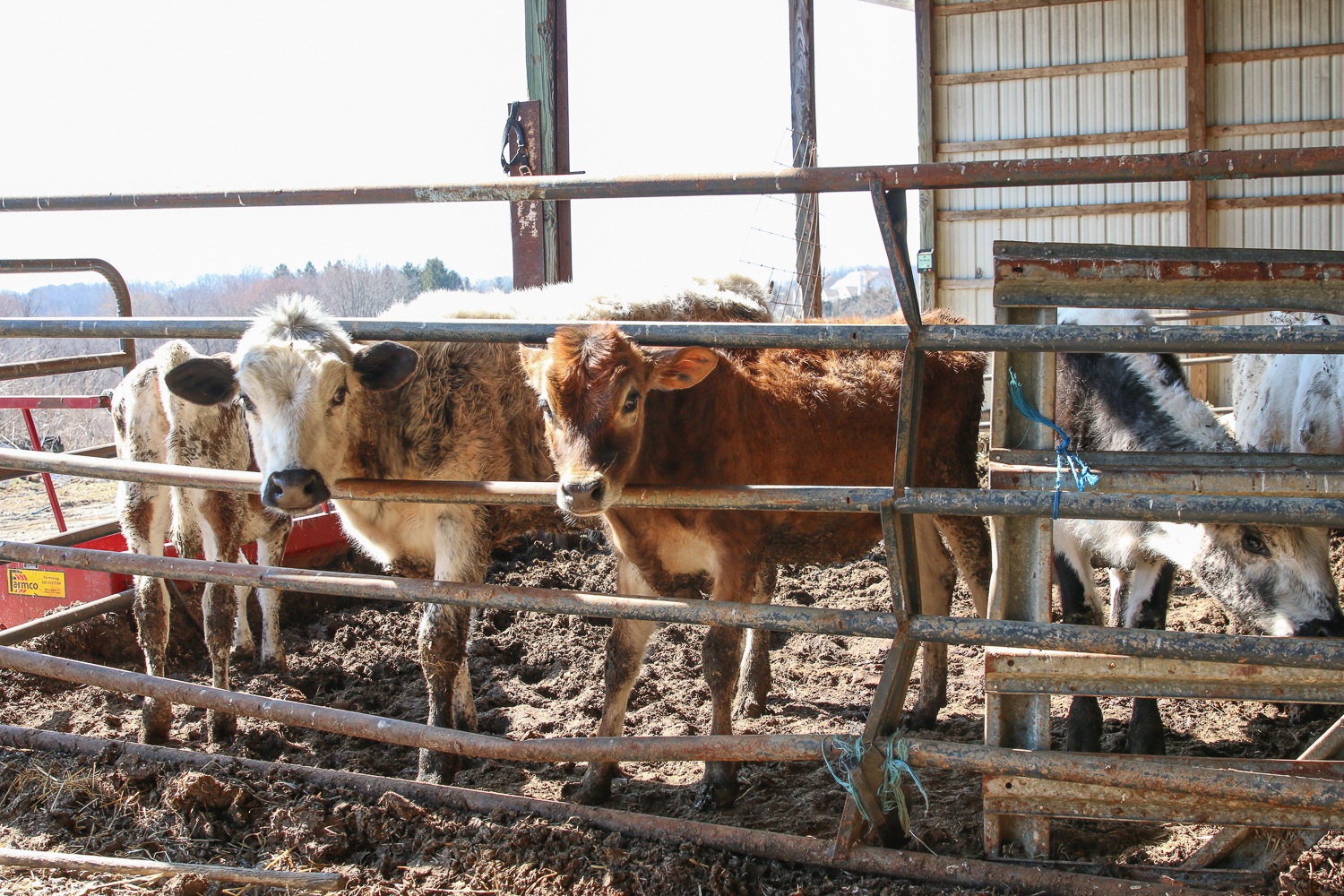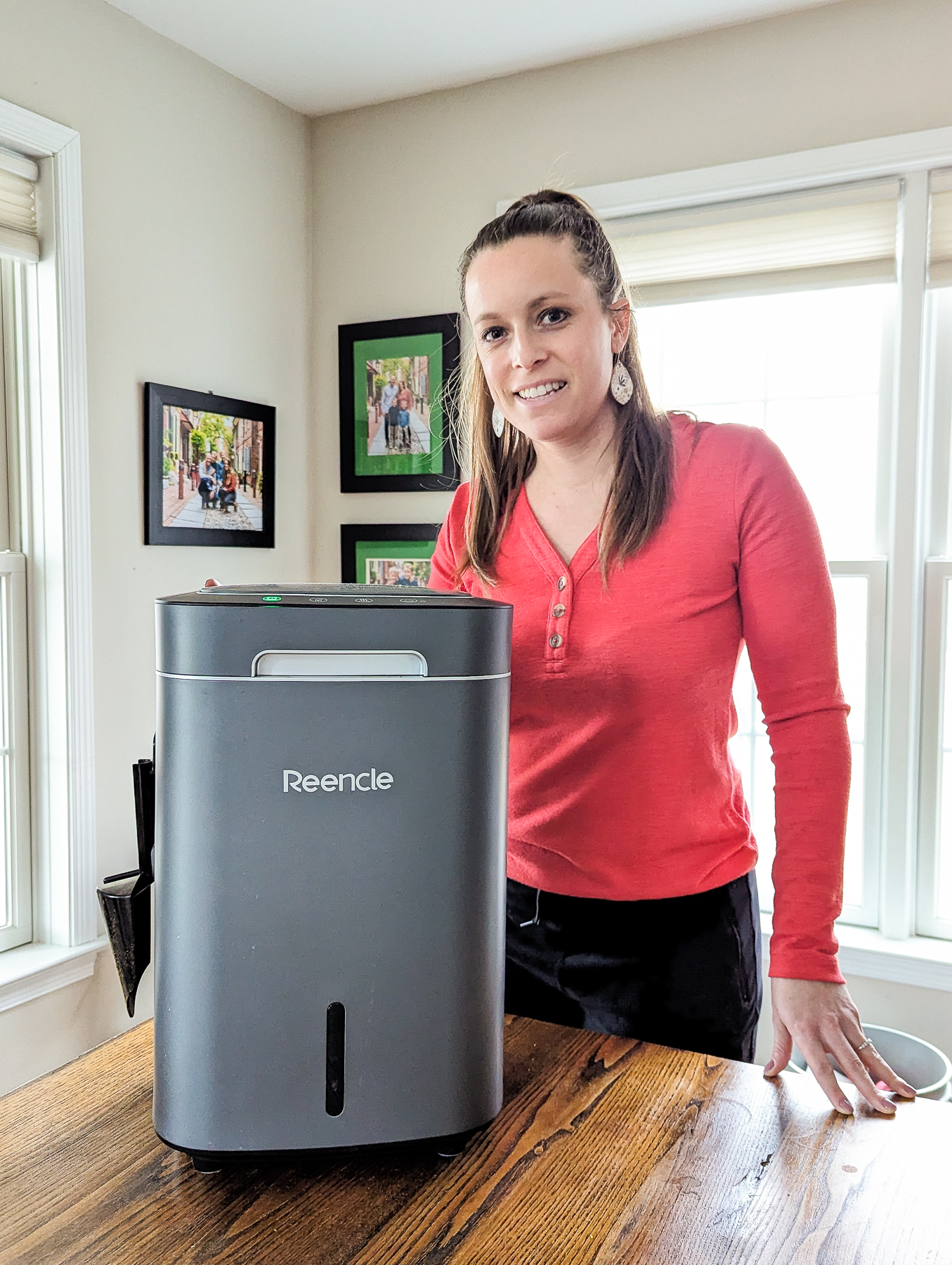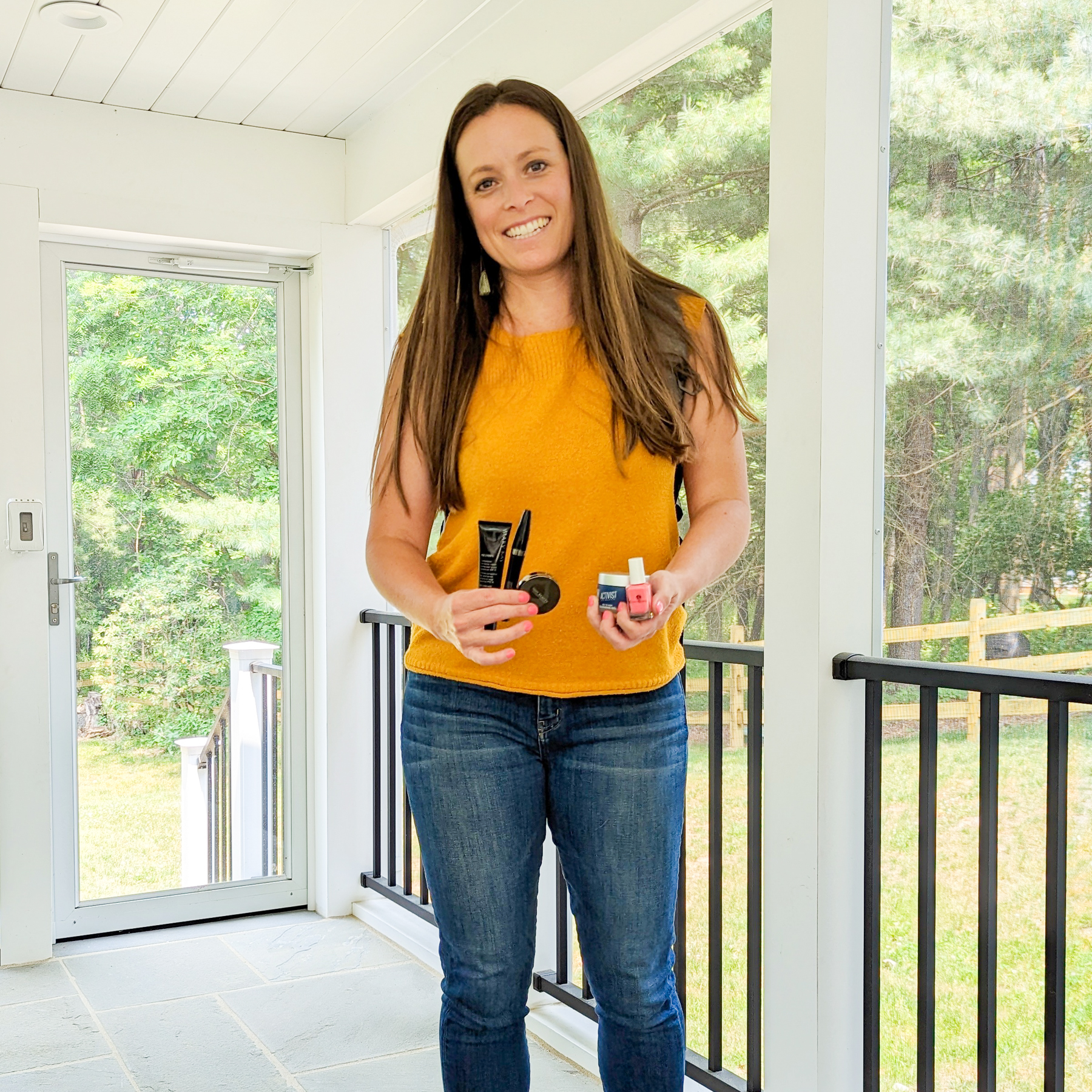Everyday Kitchen Items: Home Compostable vs. Industrial Compostable
As composting becomes mainstream and compostable bioplastics grow in popularity, I’ve seen more versions of everyday products made of compostable plastics, especially those related to the kitchen. But like so many things in sustainability, compostable plastics aren’t always what you expect, particularly when it comes to proper disposal of the products. Some products only compost properly in certain types of composting facilities. Read on for more information about home compostable vs. industrial compostable labels and their implications.
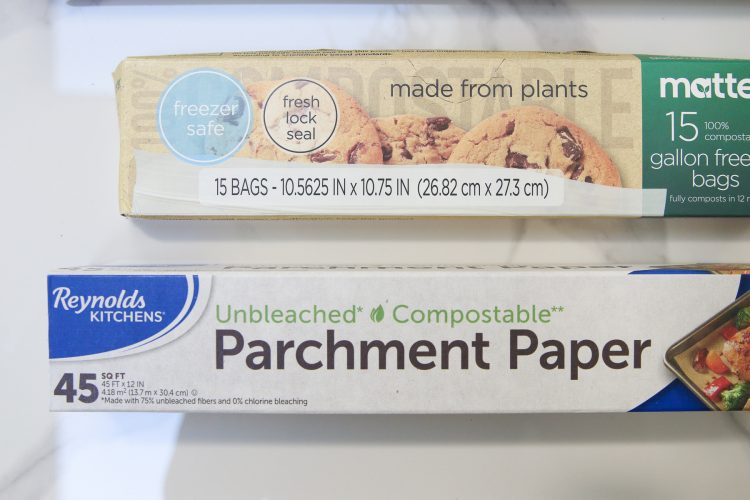
Single-use plastic is the pits, right? Well. Maybe. Probably yes.
I’m sure it’s good for some things, and as Sarah Robertson-Barnes says, it’s only single-use if you use it once (cheers to creative reuse like our grandmother’s perfected). But by and large, single-use plastic is great for corporate profits and terrible for the planet (and not particularly great for customer budgets if we just keep buying more of it).
During recent trips through the grocery store and while sifting through customer buckets for WasteWell, however, I’ve seen a growing trend of compostable plastics popping up to replace items previously made of petroleum byproducts. I’ve stumbled on a variety of new-to-me compostable plastic items like compostable coffee pods, compostable zip-top bags, and more.
Composable cups, utensils, plastic wrap, parchment paper, ziptop bags, and other similar compostable plastics are entering consumer markets at an increasing rate. This is great news because compostable bioplastic items are better for the environment than the fossil-fuel-generated alternatives that take hundreds of years to break down and then languish in landfills.
But “compostable” doesn’t necessarily mean “entirely awesome.” First, the most sustainable thing we can use is the thing we already have. So if we can nix single-use items in general, it’s often a better option. Compostable bioplastics are usually better than traditional plastics, but they aren’t a perfect solution bearing a moral license to use them carte blanche. Compostable single-use items still require resources to make, package, transport, and dispose of them.
The term compostable also comes with its own set of caveats. They aren’t nearly as convoluted as recycling symbols. The term “compostable” is defined by the Federal Trade Commission in the United States, and there are at least two independent organizations that use independent standards to certify the use of the term “compostable” on various products.
But we need to understand which compostable plastics can be composted in our backyard compost bin and which compostable bioplastics only break down properly in industrial composting systems in order to ensure they have the intended effect of reducing greenhouse gas emissions and plastic pollution.
It’s compostable but not in my bin?
Go ahead and throw your apple core or your banana peel in your backyard compost bin. Heck, you can even put a few of those bread crusts that your kid won’t eat in the bin. So long as you properly manage it, the microbes and worms will eat it right up.
But before you toss the compostable fork or the compostable ziptop bag in your backyard bin, take a second look at the label. These compostable products are made of plant-based bioplastics and will break down much faster than traditional plastics… but only in the right conditions.
Most likely, you need to find an industrial composting facility, and your backyard bin is definitely not going to cut it (or eat it or whatever you want to call it). And you may not have an industrial composting facility to which you have access in your area.
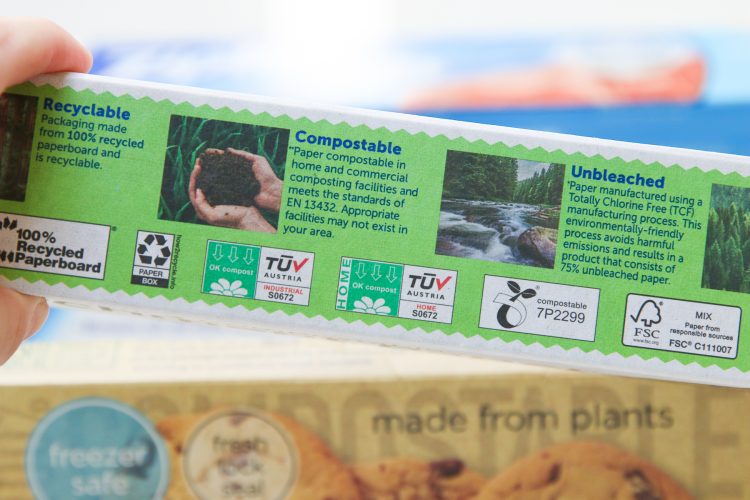
What is industrial composting?
Industrial composting, also called commercial composting, is composting performed on a large scale and under certain temperatures and microbial conditions. Industrial or commercial composting managers utilize composting methods that break down food scraps and other organic matter quickly, effectively, and with more precision than most home composting systems. There are typically three types of processing systems used in industrial composting.
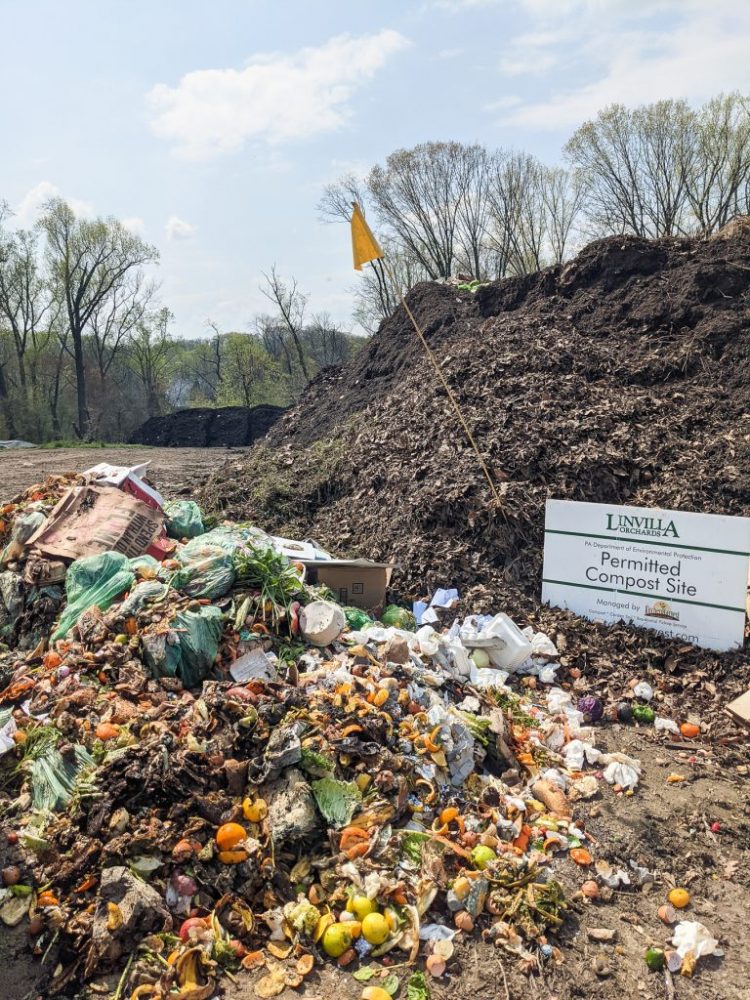
Windrows
Windrows are long, large open piles of compost feedstocks that include both greens and browns. They are typically large in size and are turned regularly to ensure high temperatures in the center of the pile that effectively break down organic materials and also kill weed seeds, diseases, and other bad bacteria.
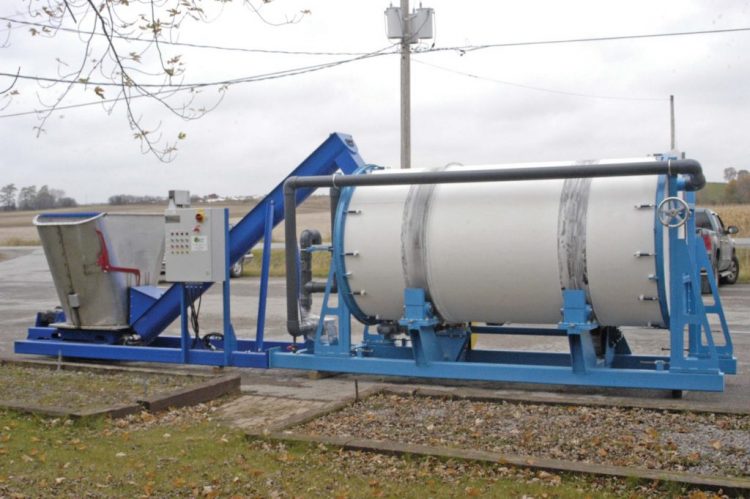
In-vessel composting
As the name describes, this composting system uses a vessel or container to hold all of the materials inside a machine. Vessels may be silos, drums, or concrete-lined trenches. Using these systems, industrial composters can process large volumes of feedstock while also managing temperature, moisture, and other important elements to ensure effective and expedited decomposition.
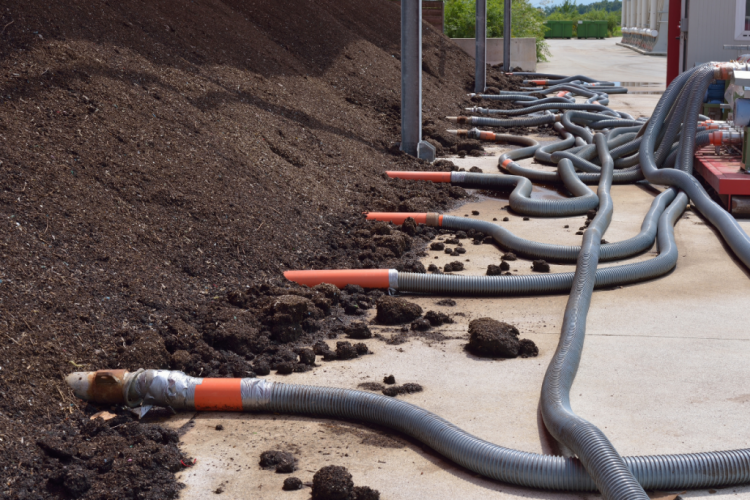
Aerated static piles
Similar in shape to windrows, waste is managed in long piles. Food scraps and other organic waste are layered with browns like wood chips, cardboard, and shredded newspaper. Unlike windrows, these piles have a network of pipes underneath them that blows air into the piles to manage proper aeration (or airflow). This aeration speeds up the decomposition process and helps make it more effective and efficient.
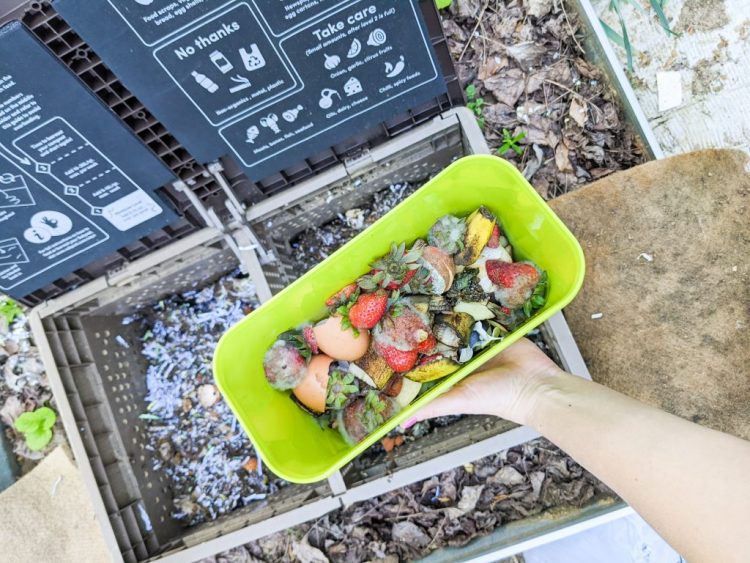
What is home composting?
As the name implies, home composting is performed on a much smaller scale often by individuals. Items certified to be home compostable will break down in a backyard compost pile at ambient temperature and in a natural microbial environment in a set amount of time. Home composting often happens in backyards, small gardens, or shared community gardens.
Because the systems are smaller, they don’t always heat up as effectively as industrial composting systems. Also, they are not typically managed with as much detailed precision, so the composting systems may not break down materials or kill bacteria and plant diseases as effectively as industrial composting.
Why do certain items only break down in industrial composting facilities?
Certain materials, especially manufactured compostable materials like bioplastic, can be more difficult to break down and require higher temperatures for adequate decomposition. Home composting bins often do not get hot enough or have sufficient management precision to break down certain bioplastics.
Furthermore, bioplastics take longer to break down in non-industrial composite systems. Without effective management, those light but more durable bioplastics blow around composting bins and areas, making it even more difficult to effectively manage them.
Food scraps, yard waste, and simple organic matter will eventually break down in just about any of your home composting systems under proper conditions. Certain types of compostable materials, like compostable plastics, however, require much higher temperatures to break down than pure organic matter like dried leaves, food scraps, and leftovers.
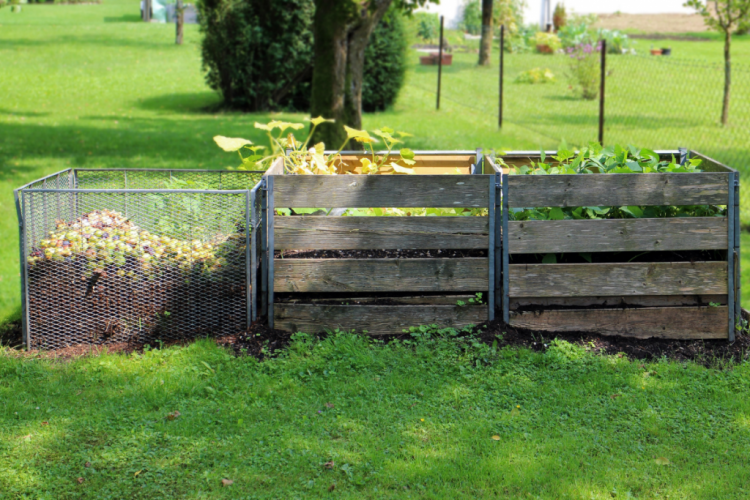
How do you know if an item belongs in a home composting bin?
Some items can always go in a home composting bin. Produce scraps, dried leaves, eggshells, cardboard and paper, and similar items will break down in a home compost bin just fine.
Meat, dairy, and oil products won’t contaminate a compost pile, but they can attract animals and significantly slow decomposition. Thus, many people steer clear of adding these items to their home composting piles unless they plan to manage them diligently.
When it comes to compostable plastics, however, we have to dig a little deeper. The easiest way to determine how to compost bioplastic products is often by looking at the certification on the packaging when you buy it.
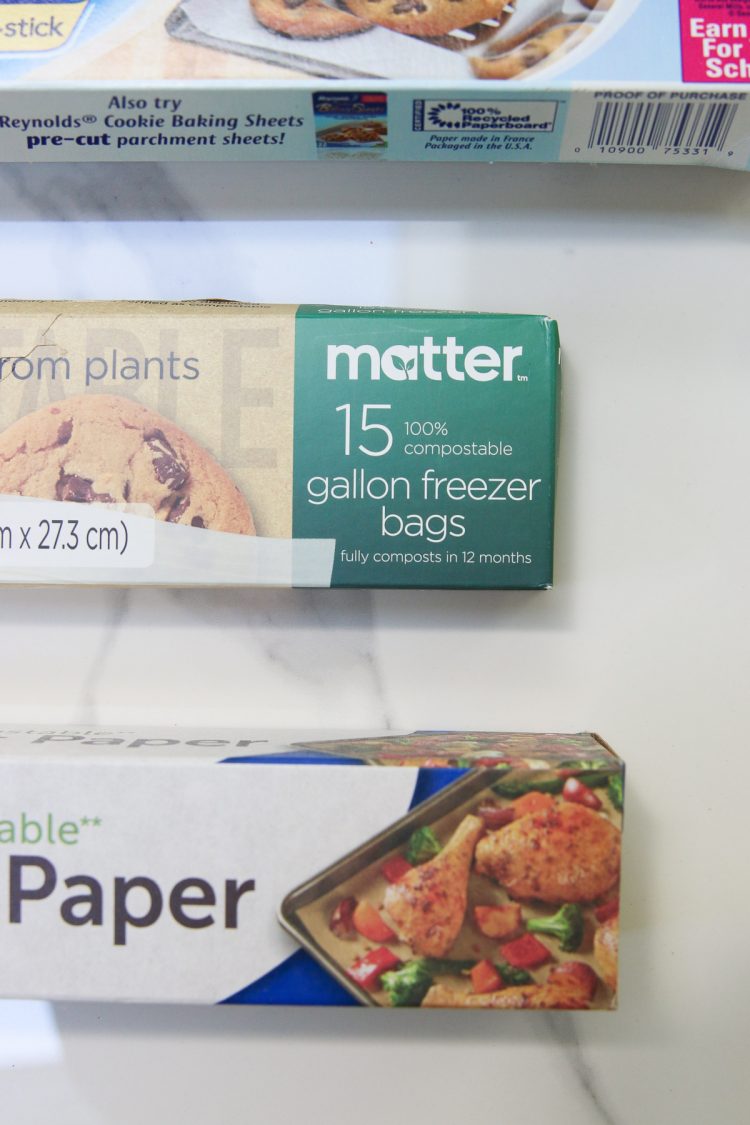
Compostable Industrial and Compostable Home Certifications
With respect to processed compostable items, like bioplastics, there are several types of certifications that indicate under what circumstances an item will effectively compost. A few different organizations have defined terms and conditions under which an item must decompose in order to be considered suitable for home composting or only industrial composting. Anything that is certified for home composting will be just fine in an industrial or commercial composting environment.
Industrial Compost Certifications
There are two main commercial or industrial compost test standards: ASTM D6400 and EN 13432. These standards require the same timelines, materials, and test setup.
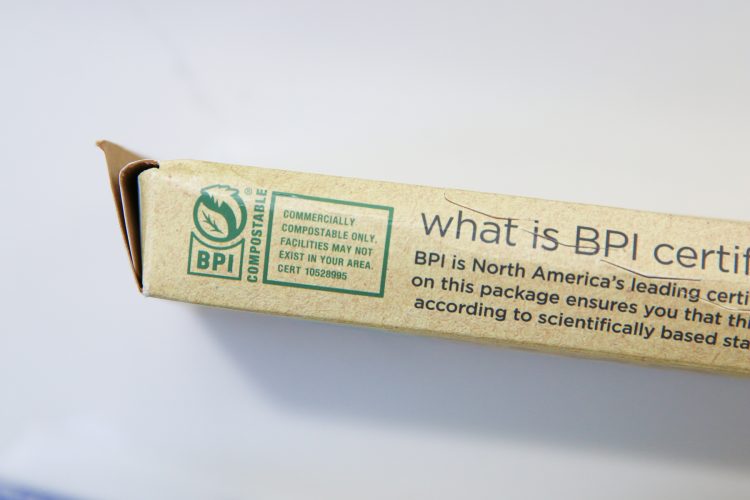
Composting Certification under Biodegradable Products Institute
ASTM D6400 is most common in North America and is the basis for certification by the Biodegradable Products Institute (BPI). The standards for certification are extensive. For end users trying to determine if a product is compostable, look for the BPI compostable marks shown below. The BPI certification marks show items that are compostable in industrial facilities.
Note that BPI does not have a certification specifically for items that are compostable at home. Thus, a BPI certification won’t be able to distinguish an item you can compost using a commercial facility but that wouldn’t break down in a backyard bin.
Further, there has been increasing pressure from various government agencies to clarify the compostability specifications on the package. In particular, companies increasingly must disclose when items are only commercially compostable and remind consumers that the item is effectively not compostable if they don’t have access to one of these facilities.

Composting Certification under TUV Austria
TUV Austria is the main certification body for compostable items in Europe and uses EN 13432 standard to certify under its OK Compost certification. Unlike BPI certification, TUV Austria has two categories for compostability: OK Compost INDUSTRIAL and OK Compost HOME.
As the names imply, OK Compost INDUSTRIAL identifies items that are compostable only in industrial facilities. OK Compost HOME indicates an item is compostable in a home compost system. Anything marked as OK Compost Home will also be accepted in an industrial compost facility.
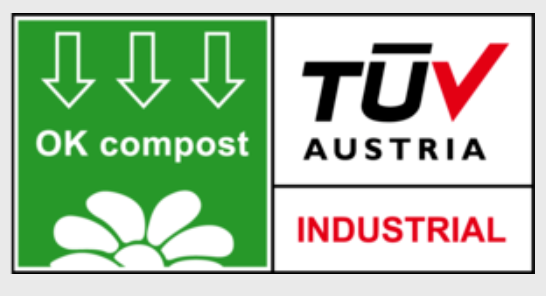
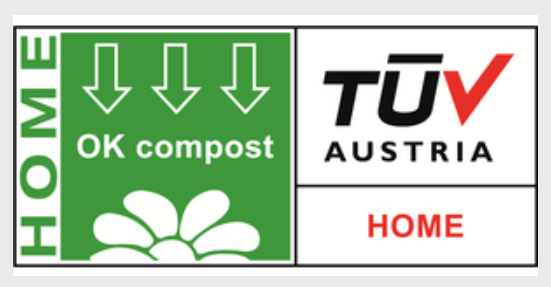
The use of each of these marks isn’t limited to their respective certification locations. For example, we’ve seen OK compost marks on items in the United States (like the parchment paper I purchased in the photo below). TUV Austria marks are somewhat more helpful than the BPI certification, particularly for those seeking to compost at home.
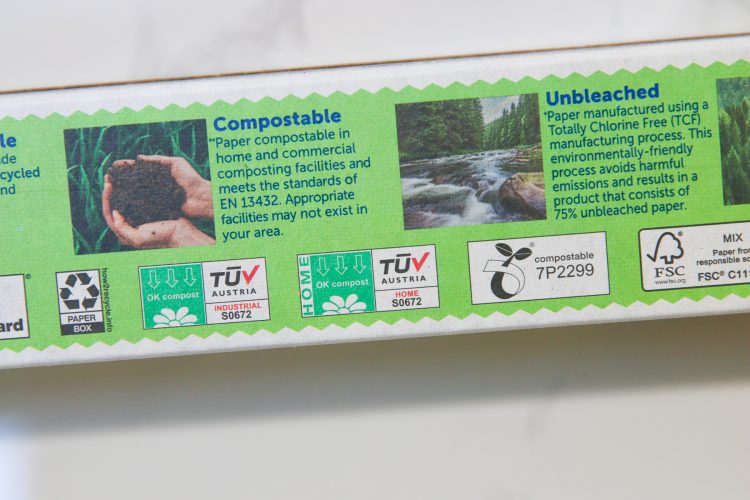
If you see any of these marks on products, you can rely on the certification to indicate that the item can safely be composted in an industrial composting facility or home composting bin based on the specific mark applied to the product.
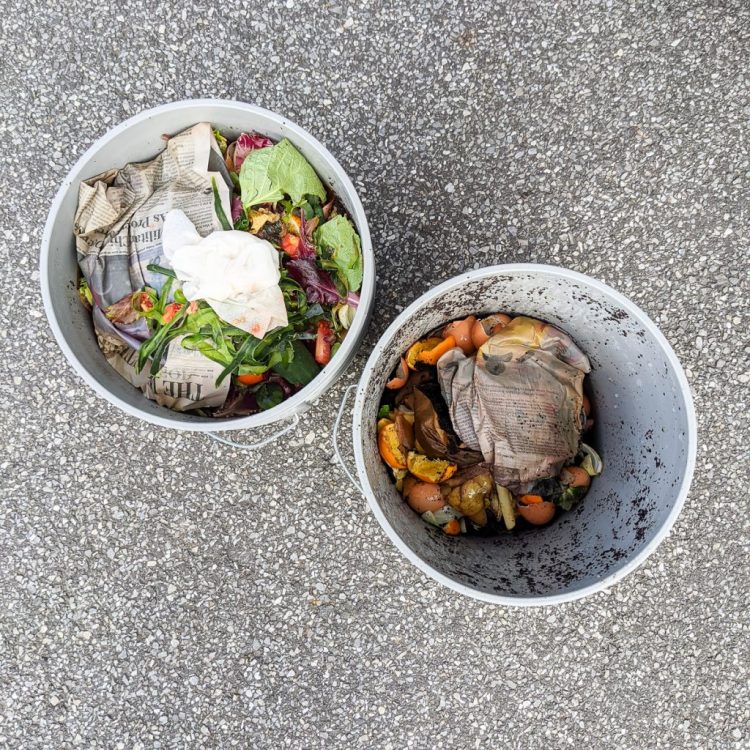
Which types of compostable items do compost collection services accept?
Most (though not all) curbside composting collection services accept most compostable items that require industrial composting processes. Many large composting partners manage outdoor windrow composting systems to create nutrient-rich finished compost that meets the requirements of the Organic Materials Review Institute (OMRI) to be utilized in certified, organic growing, and agriculture. Windrows of this size and capacity technically fall under industrial composting definitions, so these types of facilities accept nearly all items that are compostable in both home and industrial facilities.
If you use a compost collection service (through a private hauler, a municipality, or other means), be sure to inquire about what they accept. They probably have a list on their site to help you out. Each facility will be different, so it’s helpful to know what works with their process.
How do you know if compostable bioplastics go in a compost collection bin?
Contamination in compost piles is expensive and time-consuming to fix, so if you’re not sure if something is compostable, it’s best to toss it in the trash. Hopefully, our waste management systems will continue to evolve such that we have more clarity about what can be composted and most of our waste will be made of compostable bio-based materials in the future.
Until then, check out our Can You Compost…? Interactive Tool to find out if a specific item is compostable. If possible, you can also check a product’s packaging to see if it has a certification label on it.
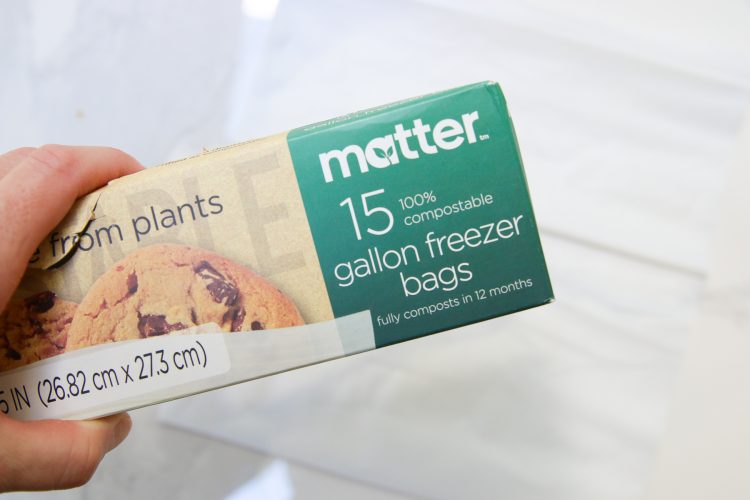
Unless you’re specifically putting something in your or your neighbor’s compost bin, it’s likely safe to assume that public compost collection bins (like those you find at airports, restaurants, and other such places) use industrial composting facilities and can accept anything that’s compostable under any conditions.
Any other questions about home compostable vs industrial compostable?
Hopefully, that helps you identify when you can compost items and where they belong. If you have any further questions, be sure to let me know. Drop a comment below and I’ll do my best to answer it!

Jen Panaro
Jen Panaro, founder and editor-in-chief of Honestly Modern, is a self-proclaimed composting nerd and advocate for sustainable living for modern families. To find her latest work, subscribe to her newsletter, Stepping Stones.
In her spare time, she’s a serial library book borrower, a messy gardener, and a mom of two boys who spends a lot of time in hockey rinks and on baseball fields.
You can find more of her work at Raising Global Kidizens, an online space to help parents and caregivers raise the next generation of responsible global citizens.

